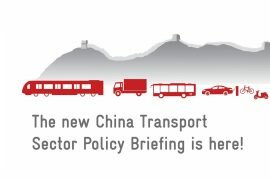With rapid economic development and accelerated urbanization, Chinese cities are experiencing a substantial growth in vehicle population and motorized mobility. Yet, vehicle ownership rates are still a fraction of those in developed countries—118 motor vehicles per 1,000 persons in 2015 compared to 748 per 1,000 persons in Germany. Against this background, we expect continued growth of vehicle demand in China, especially in tier 3 and tier 4 cities.
The rapidly growing number of motorized vehicles puts high pressure on the cities’ transport systems, while greenhouse gas emissions and local air pollutants, as well as external costs of traffic congestion, are increasing. Neither the provision of additional road infrastructure nor the development of new car technologies can overcome all these challenges. A sustainable solution to the city’s traffic problems can only be achieved by implementing travel demand management (TDM) strategies. Particularly parking management as one of the most effective TDM policies can contribute to alleviate a wide range of transportation problems.
A contribution to liveable cities
As this report on efficient parking management shows, parking management combined with various pricing schemes can play a positive role in leveraging vehicle ownership and vehicle usage. Furthermore, good parking management can generate income that can provide financial support for the development of other sustainable transport modes, for example non-motorized transport and public transportation.
One particular lesson is that more parking space is not the solution for parking problems. In the past, cities tended to solve parking problems simply by increasing supply, for example, by converting more curb lanes and sidewalks into parking, subsidizing the construction of municipal parking facilities and by increasing the number of parking spaces required in new development.
However, this strategy is costly and unfair. It encourages motorists to use parking facilities inefficiently. Abundant, subsidized parking encourages increased automobile ownership and use, which exacerbates other transportation problems, including traffic congestion, accidents, energy consumption and pollution emissions. Parking subsidies are unfair because they force everybody to pay for parking facilities regardless of whether they use them.
Instead, in the new era of urbanization, applying a new parking planning paradigm will allow Chinese cities to explore how to integrate and implement parking policies in a more effective way. This includes the following factors:
- Parking facilities should be managed for efficiency, to maximize their value and minimize the number of parking spaces needed to serve each area;
- As much as possible, users should pay directly for the cost of parking facilities;
- Intelligent and information technology should be implemented to simplify the parking process, such as checking for parking space availability and quick payment options;
- Parking requirements should be flexible to adapt to demands in each situation.
Based on the site visits and technical exchanges with local research institutes from the cities of Qingdao and Tianjin, Dr. Paul Barter together with the GIZ transport team drafted the policy proposal of parking management in Chinese cities.
Click below to download the report in English or Chinese.






Comments are closed.